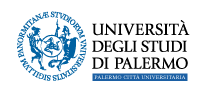Collection of Historical Instruments of Chemistry
The rooms of this Museum have been furnished with three chemical counters and numerous showcases containing the equipment and instruments of the collection, evidence of the different research themes carried out in Palermo and their diversifications, especially after the foundation of the Institutes of Organic Chemistry (1951) and then that one of Physical Chemistry (1961). Stanislao Cannizzaro, since his appointment as full professor of Organic and Inorganic Chemistry in 1861, was the first to ensure that the University of Palermo had a modern and functioning chemistry laboratory, intended not only for the research of the professor and assistants, but also for the practical exercises of the students.
The oldest pieces in the collection date back to the years of Cannizzaro and show how still, in the second half of the nineteenth century, the instrumentation used by chemists was rather simple not to say rudimentary, despite achieving remarkable results. It consisted essentially of glass or porcelain containers, used to prepare, collect and store solid, liquid or gaseous substances, to measure their volume, to heat them and to make them react.
Among the instruments on display are numerous two-arm scales, equipped with boxes having weights in brass or rock crystal, or semi-automatic devices for carrying weights.
The evolution of analytical instrumentation in the nineteenth century is evidenced by the presence of two models of spectroscope, one purchased from Cannizzaro, the other one more recent and double prism, both used to perform accurate elementary analysis. Two models of Beckmann spectrophotometers for visible UV analysis and one for infrared analysis are also preserved. Optical instrumentation is completed by microscopes, polarimeters, refractometers, Duboscq apparatus and a Hellige comparator, for in-field analysis.
The Museum also preserves the traces of the prestigious international school of chemistry, commissioned by Cannizzaro during his stay in Palermo, between 1862 and 1872, which included a number of young foreign chemists such as the French Alfred Naquet, the Austrian Adolf Lieben, the German Wilhelm Körner and Emanuele Paternò from Palermo. The research that Cannizzaro conducted in Palermo was avant-garde in the international field and the teaching of chemistry, based on the most complete and accurate version of atomic-molecular theory, which these researchers carried out, had no equal in Italy, and perhaps not even in Europe.
In a showcase of the Museum are kept some chemical products, synthesized by Körner, which are a key evidence in favor of the equivalence of the six positions of substituents in the molecule of benzene. They still bear witness to how, at that time, Palermo was the centre of the international chemical scene.
In the Department of Inorganic and Analytical Chemistry, a historical library is annexed to the museum, which contains almost 1200 books, including monographs and collections, published since the early nineteenth century, and about 2400 volumes between magazines and periodicals. Among these, the Gazzetta Chimica Italiana, founded by Cannizzaro, Paternò and other illustrious chemists, is of considerable importance as it was the first newspaper to publish mainly Italian and foreign works on chemistry, and printed in Palermo from 1871 to 1904.
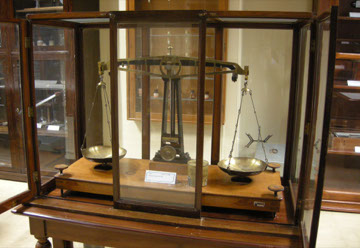
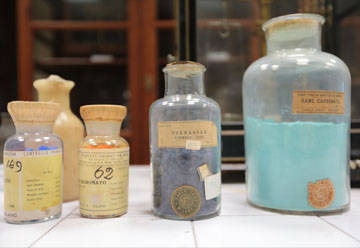
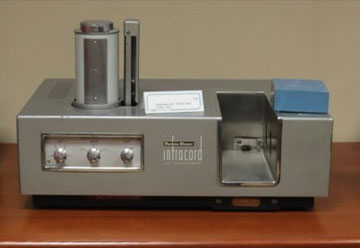
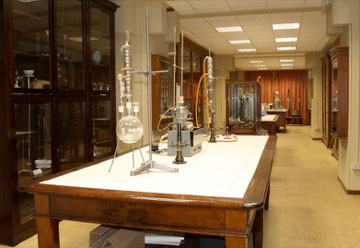
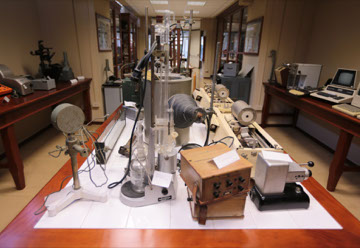
Collection of Historical Instruments of Chemistry
Responsible Dr. Giuseppe Cavallaro
Viale delle Scienze - Building 17 - ground floor - Palermo
For reservations: sistemamuseale@unipa.it
Accessible to visitors with reduced mobility
Free entry
Centro Servizi Sistema Museale di Ateneo
Università degli Studi di Palermo
Via Lincoln, 2 (Orto Botanico)
90133 PALERMO, Italia
Codice Fiscale 80023730825, Partita IVA 00605880822
091 238 96775 - 091 238 93781
